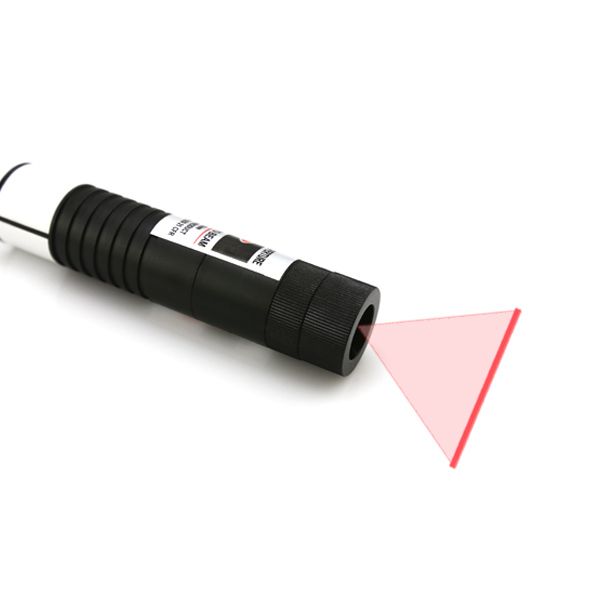
What are the difference between Gaussian and non Gaussian red line laser module? The core difference between both lasers is mainly reflected in the line shape, energy distribution, and performance characteristics, and the specific applications are also different:
Major differences:
Line shape and energy distribution.
Gaussian beam red laser is Gaussian distributed, strong in the middle and weak at the edge, with the highest brightness in the center and gradually decay towards the edge, forming a bell shaped intensity curve. The edge of red laser line is softer and there is no obvious sharp edge. Non Gaussian 650nm red laser enables more uniform energy distribution, the line intensity is less different from the center to the edge, and it may even present a flat top or rectangular distribution, and the edge contour is clearer and regular.
Beam quality and divergence angle.
Gaussian beam 650nm red line laser module gets better beam quality, the divergence angle is relatively small, the straightness and focusing of red laser line are better. It is suitable for maintaining the line shape during long distance line projection work. Non-Gaussian light laser line generator achieves energy uniformity up to 85%, some red laser beam quality may be sacrificed, the beam divergence angle is slightly larger, and the uniformity advantages is more obvious when projecting at close range. It keeps work with high brightness red line projection, thus this type of uniform beam distributed red laser is especially applicable for longer distance line positioning works.
Anti-interference ability.
Gaussian light 650nm red line laser module enables central energy concentration, the beam visibility is higher in strong light environment or on dark materials, and the ability to resist ambient light interference is strong. Non Gaussian beam red laser projects uniform energy distribution stably in scenes requiring large-area, shadow-free markings, but the visibility may be slightly lower in strong light due to the overall brightness dispersion.
Application fields:
Typical applications of Gaussian beam 650nm red line laser module:
Precision line positioning and cutting: it can be used for precise line positioning work for clothing cutting, leather processing, PCB board cutting. Featured by high brightness in the center to form a clear positioning line on the material, red laser line alignment work is suitable for scenes that require “single-point precise alignment” (such as cutting edge marking, stitching trajectory guidance).
Long-distance marking: when it projects a highly straight and fine red horizontal/vertical line marking in woodworking machinery and construction (such as ceiling, wall paving), the red alignment laser line is not easy to diverge and blur when projected over a long distance.
Instrument calibration: Optical instruments and laser radar optical path calibration, using the high directionality of Gaussian beams to improve calibration accuracy.
Typical applications of Non Gaussian beam 650nm red line laser module:
Uniform marking of large areas: high uniformity red laser line is used for pattern positioning in textile printing and dyeing, large-format fabric splicing and alignment, uniform red reference line can avoid uneven marking depths caused by uneven energy.
Visual guidance and display: highly straight and uniform red line emitted laser line generator is used for material sorting guidance of industrial assembly lines (such as conveyor belt item positioning), stage lighting projection, uniform light bands have a more neat visual effect.
Special material processing: being used as an accessory part, 650nm red alignment laser is used for cutting or welding materials with high energy uniformity requirements (such as transparent films, thin plastics) to avoid material burns due to excessive central energy.
Conclusion:
Gaussian light 650nm red laser modules have the advantages of “high center brightness and precise focusing”, which are suitable for scenes requiring strong visibility and long-distance precise positioning; non-Gaussian red laser modules are characterized by “uniform energy and regular light spots”, which are more suitable for large-area marking or applications with high uniformity requirements. When choosing, you can make a comprehensive judgment based on material properties, working distance and positioning accuracy requirements.
